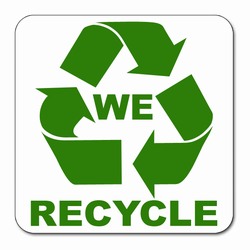I never believe the fact that sustainability is a natural, inherent consideration when customer makes their daily purchase decisions. It often comes as an after fact justification. This course has reaffirmed my thought that in order for green to be “the choice” for most consumers, the situation has to be made very restrictive and defined for this to happen. Great must come first, and green may be then added into the decision-making formula. Phillip Haid digested the myth of conscious consumerism via Sustainable Brands, where he identified the discrepancy between people’s normative and positive thinking and actions.

Throughout of the course, we encountered countless data, indicating that sustainability has become a new trend in the society. Jennifer Elks claimed that Millennial will drive sustainable purchasing trends (as mentioned in my January Archive Journal), and Nielsen’s Global Survey on Corporate Social Responsibility, stated that 55% of global online purchasers are willing to pay premium to companies whose corporate responsibility is geared towards some charitable and supportive mission that is not purely monetary driven. Nevertheless, where are the real changes? If this many claim that they will be committed and dedicated, why is green purchasing still situating at a niche market? Sustainability may not be unfamiliar to the corporate and business world, because there is inherent cost reduction and efficiency enhancement associated with such initatives. Therefore, it makes strategic sense for any company to make the shift, because it achieves desired result. Nevertheless, to the general consumers (not the “true blue-green type”), green initiative still remains dispensable. In other words, they are indifferent towards green products and regular prototype. The only situation that I envision that the green product is favoured, is that the green alternative has a brand image and market reputation to be of higher quality accompanied with equal price or with slight, insignificant adjustment for premium. In short, unless our thinking can be “prep-programmed”, revolutionized, or consciously adjusted for when making purchasing decisions, we may have to reply on business and government to make every possible choice on the shelf green to be green purchasers.
 Another myth tackled by Haid relates to motive. This one challenges the impossibility of co-existence of economic drive and social drive of a company, which mainly results from cynicism and distrust from purchasers. It would be overly extreme to claim that business functions with money and money only. I feel that this type of thought is fading in the society, which puts us as a transitioning stage between pure awareness to taking actions. There is a long way to go, but it is trending positive. Hopefully there could be a day where changes can be accelerated. As the results become observable, the process can be further quickened, forming a virtuous cycle of development.
Another myth tackled by Haid relates to motive. This one challenges the impossibility of co-existence of economic drive and social drive of a company, which mainly results from cynicism and distrust from purchasers. It would be overly extreme to claim that business functions with money and money only. I feel that this type of thought is fading in the society, which puts us as a transitioning stage between pure awareness to taking actions. There is a long way to go, but it is trending positive. Hopefully there could be a day where changes can be accelerated. As the results become observable, the process can be further quickened, forming a virtuous cycle of development.









 make impressive changes. However, with more powerful business leaders, who take control of a larger population, we would expect the change to be more obvious, although this is not necessarily the case. We see company getting increasingly conscious; however, we still see them using excessive packaging, utilizing cheaper labour in third world countries, discharging waste into water streams. It is not to say that they are not trying hard enough; but we might be missing the point here. Sustainability may be one of the many objectives that companies consider, or claim to consider. When this is tied to economic performance and opportunities, there is also an incentive for these companies to paint their image with suitability. Sustainable objective is something that needs to be tracked. It should also be normalized, as one of the many strategic goals for companies, rather than being separately treated as a bonus perk.
make impressive changes. However, with more powerful business leaders, who take control of a larger population, we would expect the change to be more obvious, although this is not necessarily the case. We see company getting increasingly conscious; however, we still see them using excessive packaging, utilizing cheaper labour in third world countries, discharging waste into water streams. It is not to say that they are not trying hard enough; but we might be missing the point here. Sustainability may be one of the many objectives that companies consider, or claim to consider. When this is tied to economic performance and opportunities, there is also an incentive for these companies to paint their image with suitability. Sustainable objective is something that needs to be tracked. It should also be normalized, as one of the many strategic goals for companies, rather than being separately treated as a bonus perk.
 I always feel that change cannot be achieved with an individual. The need to change and the desired action is often invented, by a group of individuals, with the objective to gain more influence. However, human beings seem to generally be a passive responder, reacting only to unavoidable consequences and responsibilities. There are still sometime before the environment becomes the one and single pressing issue that can no longer be ignored. The normative analysis tells people to become active and engaged, while the positive analysis indicates that people are putting their dependence on each other, without truth progressing as a unity.
I always feel that change cannot be achieved with an individual. The need to change and the desired action is often invented, by a group of individuals, with the objective to gain more influence. However, human beings seem to generally be a passive responder, reacting only to unavoidable consequences and responsibilities. There are still sometime before the environment becomes the one and single pressing issue that can no longer be ignored. The normative analysis tells people to become active and engaged, while the positive analysis indicates that people are putting their dependence on each other, without truth progressing as a unity.